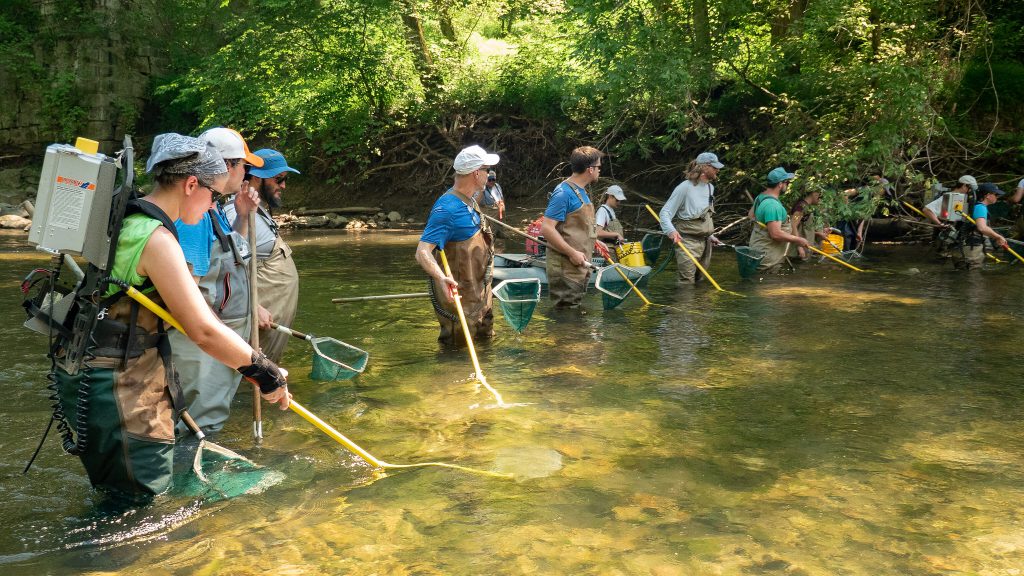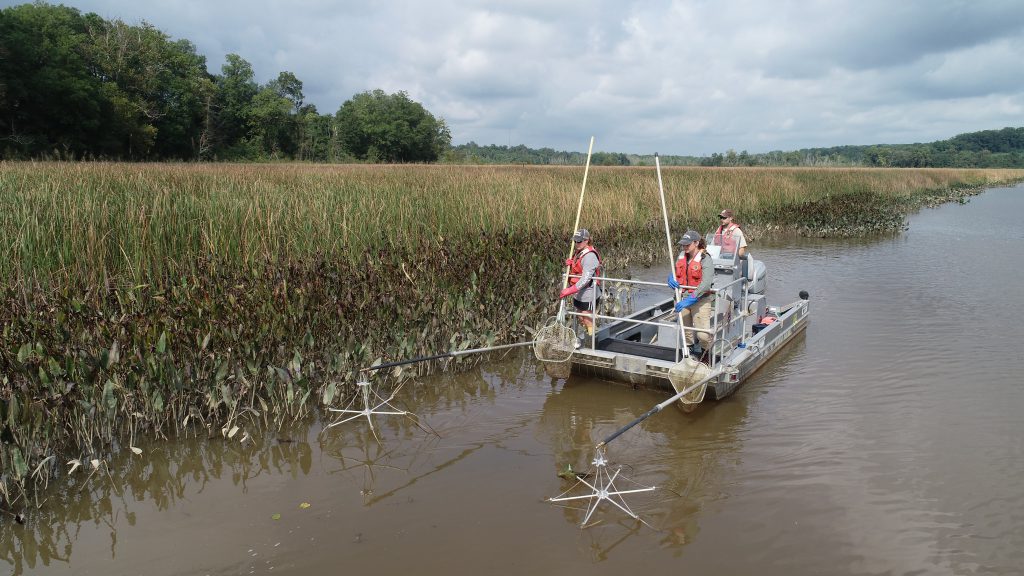Tools of the Trade: Electrofishing
It’s electric!
Electrofishing is a technique used by fish biologists to collect fish in freshwater streams, rivers, and lakes.
This tool uses an electric field, emitted from a pulser, to temporarily stun fish. The fish can then be collected via dip net for identification. Data collected from electrofishing can be used to determine abundance, density, species composition, and health of fish populations.
There are several methods of electrofishing:
• In smaller streams, biologists use backpack units.
• A floating raft unit is often used in larger streams and rivers.
• Electrofishing boats are used in lakes, reservoirs, or freshwater portions of rivers.
How does electrofishing work?
Electrofishing uses direct current electricity flowing between electrodes, one of which is an anode. When the proper amount of current is applied to the water, fish are drawn toward the anode through involuntary muscle movements. Upon reaching the anode, fish are stunned.
Batteries supply the electrical current in backpack units. The anode is located at the end of a long pole held by the operator and the cathode is a cable that trails behind the operator. In larger streams and rivers, the method is similar, with a generator helping to provide electrical current on a floating raft or boat instead of a battery in a backpack.
When electrofishing from a boat, the anodes are mounted on two booms off the bow of the boat. For some boats, metal wires dangling in the water at the front of the boat are also anodes. The boat itself is the other electrode, the cathode. The stunned fish are drawn toward the anodes, where they are caught with a net. Fish are generally affected within six to eight feet of the booms.
Does electrofishing harm fish?
No. Fish are very rarely injured. When electrofishing is performed correctly, the fish are temporarily stunned, allowing biologists to collect them using dip nets. Fish recover fully in a matter of minutes, sometimes in seconds, and are returned to the water quickly.
Recovery time varies with species, water temperature, and amount of current used. Biologists are careful to use the least amount of current possible to ensure fish are stunned but not harmed. If scientists are electrofishing from a boat, fish are collected and held in a tank until they are released.
What safety precautions are in place during electrofishing operations?
Power output generated by electrofishing can cause serious damage to humans so safety is the priority during electrofishing operations. Operators wear rubber waders and gloves to protect against shocking. Backpack units have safety features that shut down the unit when the anode is out of the water or if the operator falls into the stream.
With output on electrofishing boats possibly reaching up to 1,000 volts, safety is especially important. Boats feature emergency shut-off switches if the power needs to be turned off quickly. Crews usually consist of a captain, who is driving the boat and controls the emergency shut-off switch, and two people at the bow of the boat, who apply electricity to the water using a foot pedal. Electrofishing boats are recommended to cease operation within 100 feet of another person in the target area.
Electrofishing scientists follow a strict set of safety guidelines created by the U.S. Fish and Wildlife Service, which offers web-based training for Maryland Department of Natural Resources staff.
Article appears in Vol. 23, No. 1 of the Maryland Natural Resource magazine, spring 2020.



 1-888-373-7888
1-888-373-7888 233733
233733